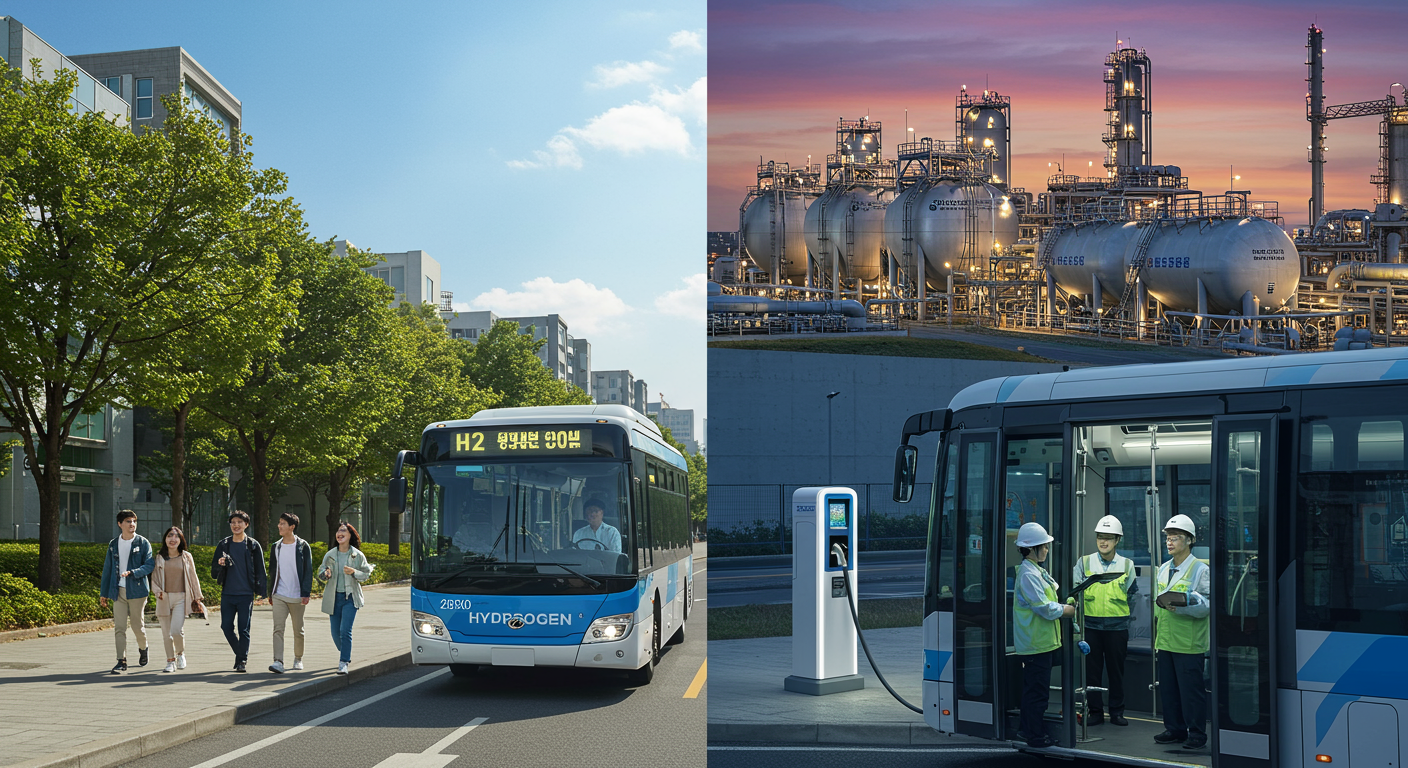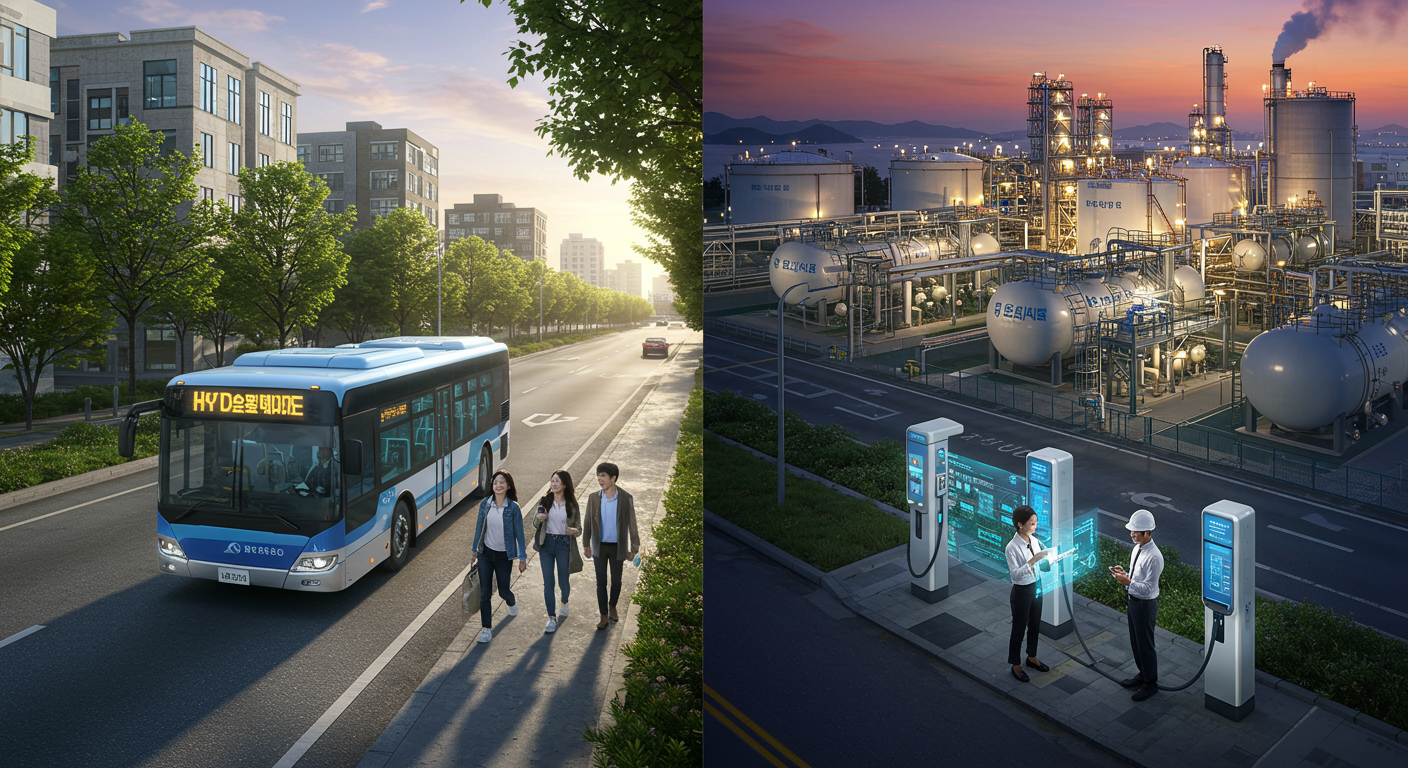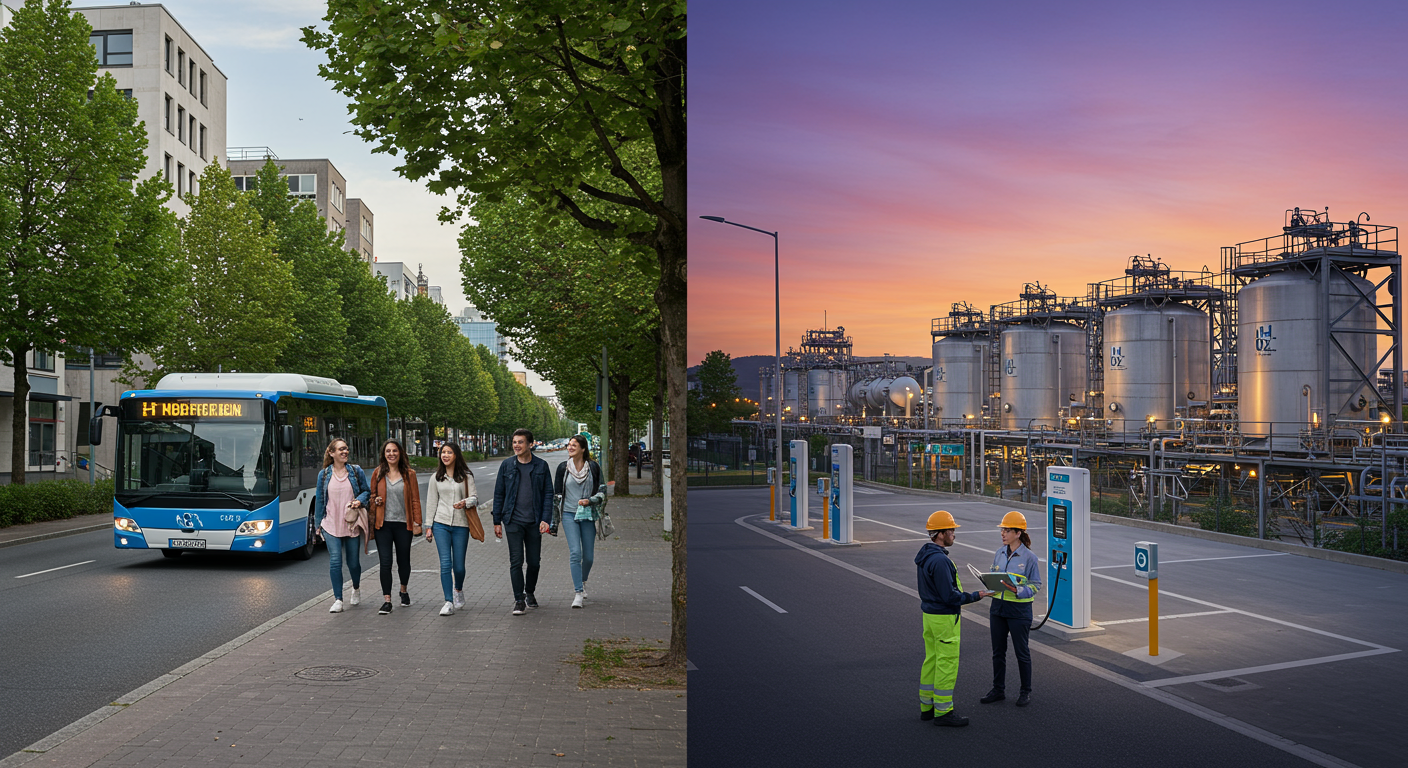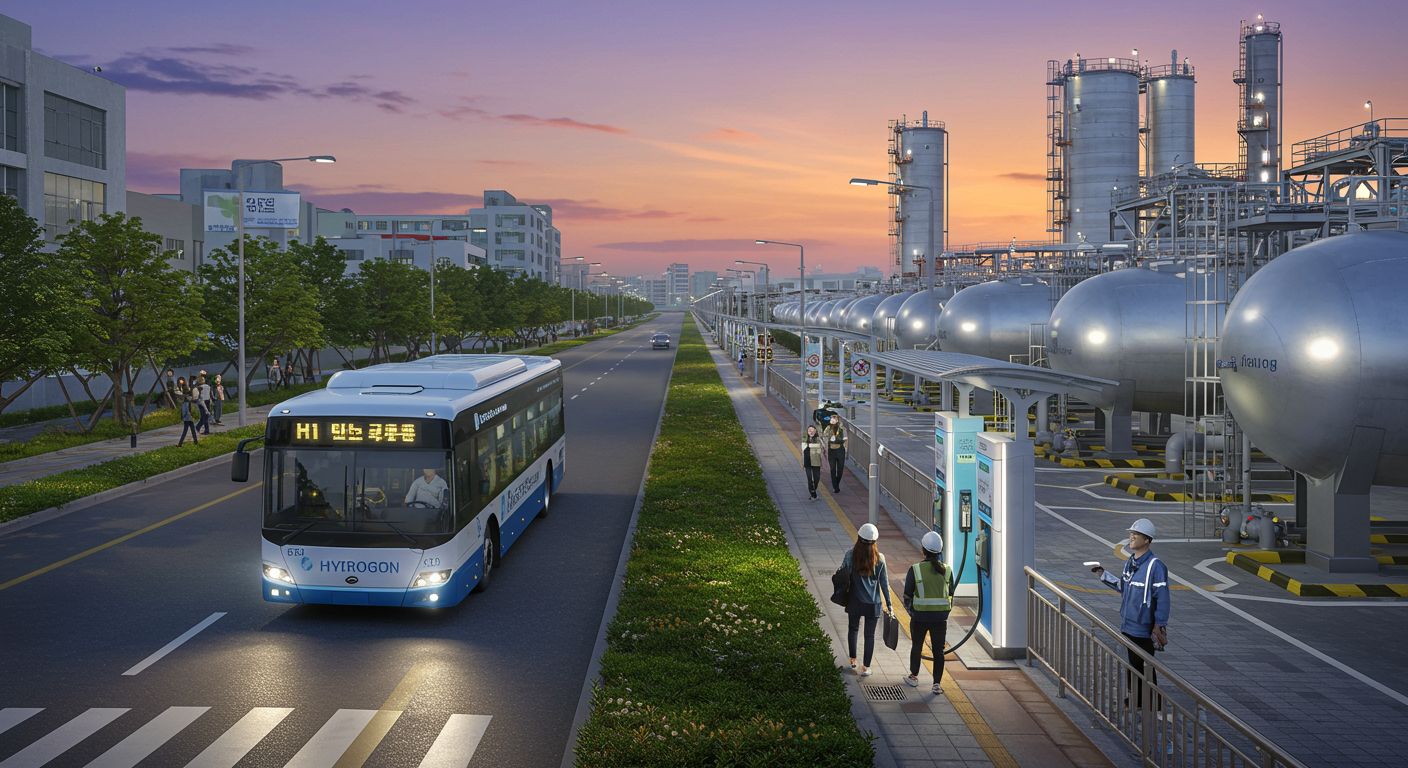The Silent Roar of Progress: How Hydrogen Buses are Redefining Urban Transit
The Silent Roar of Progress: How Hydrogen Buses are Redefining Urban Transit
Imagine a city where public transport glides by almost silently, leaving behind nothing but clean air. Sounds like a futuristic dream, doesn't it? Well, guess what—that future is already here, and it's quieter than you think!
For years, we've been talking about green energy and sustainable cities, but sometimes it feels like just talk. Then, you hear about something truly groundbreaking, something that shows we're actually making huge strides. I mean, just the other day, I saw a report about a hydrogen bus being charged up at what's now the world's largest liquid hydrogen plant in Incheon, South Korea. And the kicker? When it starts, it's virtually silent. Honestly, it made me stop and think about how much progress we're actually making. This isn't just about a bus; it's about a whole new way of thinking about our urban environments.
Table of Contents
The Dawn of Quiet Commutes: What are Hydrogen Buses?
So, what exactly is a hydrogen bus? It's not just another electric vehicle, folks. These beauties run on hydrogen fuel cells, which convert hydrogen gas into electricity to power the bus's motor. The only byproduct? Pure water! No nasty tailpipe emissions, no smog, just clean, refreshing H₂O. And as for the "quiet" part, it's truly remarkable. Unlike traditional diesel buses that rumble and roar through our neighborhoods, hydrogen buses operate with a gentle hum, if any at all. This means less noise pollution in our bustling cities, making commutes more pleasant for passengers and improving the quality of life for residents along bus routes. Think about it: a city where the loudest sound isn't traffic, but maybe birds chirping or kids laughing. That's a future worth investing in, wouldn't you say?
 Description : "A sleek, modern hydrogen bus, predominantly white and blue, driving silently down a clean urban street during the day. The street is lined with green trees and contemporary buildings, with a diverse group of people (various ages, casual clothes) walking on the sidewalk. The atmosphere is peaceful and eco-friendly, in a realistic photograph style."
Description : "A sleek, modern hydrogen bus, predominantly white and blue, driving silently down a clean urban street during the day. The street is lined with green trees and contemporary buildings, with a diverse group of people (various ages, casual clothes) walking on the sidewalk. The atmosphere is peaceful and eco-friendly, in a realistic photograph style."
Powering the Future: The World's Largest Liquid Hydrogen Plant
Now, these buses need fuel, right? And that's where the liquid hydrogen plant in Incheon comes into play. When I first heard it was the "world's largest," I couldn't help but feel a surge of optimism. This isn't just a pilot project anymore; it's a monumental step towards scalable hydrogen infrastructure. Liquid hydrogen is a game-changer because it allows for far more energy to be stored and transported in a smaller volume compared to gaseous hydrogen. This translates to more efficient refueling and a more practical distribution network, which is crucial for widespread adoption. The fact that a hydrogen bus was seen charging there on October 10th isn't just a news tidbit; it's a vivid demonstration of a functional, large-scale green energy ecosystem coming to life. It’s exactly these kinds of real-world deployments that prove the technology isn't just theory—it's here, and it's working.
 Description : "An aerial view of a sprawling, futuristic liquid hydrogen plant at dusk in Incheon, South Korea. Large silver storage tanks and complex pipelines are visible, with a hydrogen bus charging station in the foreground. The sky is a gradient of purple and orange, conveying a sense of advanced technology and a clean, industrial landscape, in a realistic photograph style."
Description : "An aerial view of a sprawling, futuristic liquid hydrogen plant at dusk in Incheon, South Korea. Large silver storage tanks and complex pipelines are visible, with a hydrogen bus charging station in the foreground. The sky is a gradient of purple and orange, conveying a sense of advanced technology and a clean, industrial landscape, in a realistic photograph style."
Beyond Zero Emissions: The Multifaceted Benefits of Hydrogen Mobility
It’s easy to get caught up in the "zero-emission" headline, and rightfully so—that's a huge win! But the benefits of hydrogen mobility, especially for public transport, extend far beyond just clean air. For one, these buses offer a much quicker refueling time compared to battery-electric buses. We're talking minutes, not hours, which is absolutely vital for maintaining tight schedules in urban transit. Then there's the extended range. Hydrogen buses can often travel further on a single tank, making them ideal for longer routes and reducing range anxiety. And let's not forget the economic ripple effects. The development and deployment of hydrogen infrastructure, from production plants to fueling stations, create new jobs and drive technological innovation. It's not just an environmental solution; it's an economic catalyst, too.
 Description : "A diverse group of city commuters (men and women, 20s-60s, dressed in casual and business attire) smiling and looking relaxed inside a brightly lit, spacious hydrogen bus. The interior is modern and clean, with large windows showing a blurry urban landscape. The overall mood is positive and futuristic, depicted in a realistic photo style."
Description : "A diverse group of city commuters (men and women, 20s-60s, dressed in casual and business attire) smiling and looking relaxed inside a brightly lit, spacious hydrogen bus. The interior is modern and clean, with large windows showing a blurry urban landscape. The overall mood is positive and futuristic, depicted in a realistic photo style."
Navigating the Road Ahead: Challenges and Innovations in Hydrogen Fuel
Of course, it's not all sunshine and rainbows. Every new technology has its hurdles, and hydrogen fuel is no different. The main challenges often boil down to cost and existing infrastructure. Building these massive liquid hydrogen plants and a network of fueling stations requires significant investment. Plus, ensuring the hydrogen is produced in a truly green way—using renewable energy for electrolysis, for example—is paramount. If we're getting hydrogen from fossil fuels, we're just shifting the problem, right? That's why constant innovation is key. We're seeing advancements in fuel cell efficiency, cheaper production methods, and better storage solutions all the time. Governments and private sectors are increasingly collaborating, pushing for policies and investments that make hydrogen a viable, affordable option. It feels like we're past the "if" and now firmly in the "how" stage, which is exciting!
My Take: What This Means for Sustainable Cities
From my perspective, having watched trends in technology and urban development for decades, this move towards hydrogen buses and large-scale liquid hydrogen infrastructure is more than just a passing fad. It's a fundamental shift. It means a future with less smog, less noise, and healthier communities. Imagine living in a city where the air feels cleaner, where you can actually hear yourself think while waiting for the bus, and where public transport isn't a source of pollution but a symbol of environmental stewardship. This isn't just about making commutes better; it's about making our cities more livable, more enjoyable, and truly sustainable for generations to come. I really believe this is the quiet revolution we've been waiting for, and seeing it unfold in places like Incheon makes me incredibly hopeful.
 Description : "A smiling, environmentally-conscious young woman (20s, wearing casual green clothing) standing in a vibrant, futuristic city park. In the background, a silent hydrogen bus drives past. The scene is bright and optimistic, with lush greenery and sleek, eco-friendly architecture, illustrating a harmonious coexistence of nature and technology in a modern illustration style."
Description : "A smiling, environmentally-conscious young woman (20s, wearing casual green clothing) standing in a vibrant, futuristic city park. In the background, a silent hydrogen bus drives past. The scene is bright and optimistic, with lush greenery and sleek, eco-friendly architecture, illustrating a harmonious coexistence of nature and technology in a modern illustration style."
FAQs About Hydrogen Buses and Green Energy
Hydrogen fuel cell vehicles, including buses, undergo rigorous safety testing and standards. Hydrogen tanks are designed to be extremely robust, and in the event of a leak, hydrogen disperses rapidly into the air due to its light nature, reducing the risk of accumulation. In many ways, they are considered as safe, if not safer, than gasoline or diesel vehicles which carry flammable liquid fuels.
This is a really important distinction! Grey hydrogen is produced from fossil fuels (like natural gas) using steam methane reforming, releasing carbon emissions. Blue hydrogen is also from fossil fuels, but the carbon emissions are captured and stored (CCS technology). The ideal, truly sustainable option is green hydrogen, which is produced by electrolyzing water using renewable energy sources like solar or wind, resulting in zero carbon emissions. For hydrogen mobility to be truly green, the source of the hydrogen itself needs to be renewable.
Comments
Post a Comment